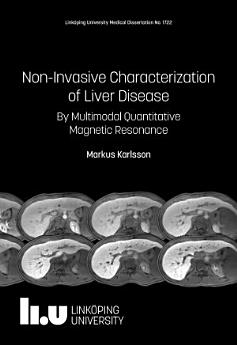Non-Invasive Characterization of Liver Disease: By Multimodal Quantitative Magnetic Resonance
About this ebook
Magnetic resonance imaging (MRI) is a non-invasive medical imaging modality, which have shown much promise with regards to characterizing liver disease in all of the abovementioned aspects. The aim of this PhD project was to develop and validate MR-based methods that can be used to non-invasively characterize liver disease.
Paper I investigated if R2* mapping, a MR-method for measuring liver iron content, can be confounded by liver fat. The results show fat does affect R2*. The conclusion was therefore that fat must be taken into account when measuring small amounts of liver iron, as a small increase in R2* could be due to either small amounts of iron or large amounts of fat.
Paper II examined whether T1 mapping, which is another MR-method, can be used for staging liver fibrosis. The results of previous research have been mixed; some studies have been very promising, whereas other studies have been less promising. Unfortunately, the results in Paper II belongs to the less promising studies.
Paper III focused on measuring liver function by dynamic contrast-enhanced MRI (DCEMRI) using a liver specific contrast agent, which is taken up the hepatocytes and excreted to the bile. The purpose of the paper was to extend and validate a method for estimating uptake and efflux rates of the contrast agent. The method had previously only been applied in health volunteers. Paper II showed that the method can be applied to CLD patients and that the uptake of the contrast agent is lower in patients with advanced fibrosis.
Paper IV also used studied liver function with DCE-MRI in patients with primary sclerosing cholangitis (PSC). PSC is a CLD where the bile ducts are attacked by the immune system. When diagnosing PSC patients, it is common to use magnetic resonance cholangiopancreatography (MRCP), which is a method for imaging the bile ducts. Paper IV examined if there was any correlation between number and severity of the morphological changes, seen on MRCP, and measures of liver function derived using DCE-MRI. However, the results showed no such correlation. The conclusion was that the results indicates that MRCP should not be used to predict parenchymal function.
Paper V developed a method for translating DCE-MRI liver function parameters from rats to humans. This translation could be of value when developing new drugs, as a tool for predicting which drugs might cause drug-induced liver injury.
In summary, this thesis has shown that multimodal quantitative MR has a bright future for characterizing liver disease from a range of different aspects.




